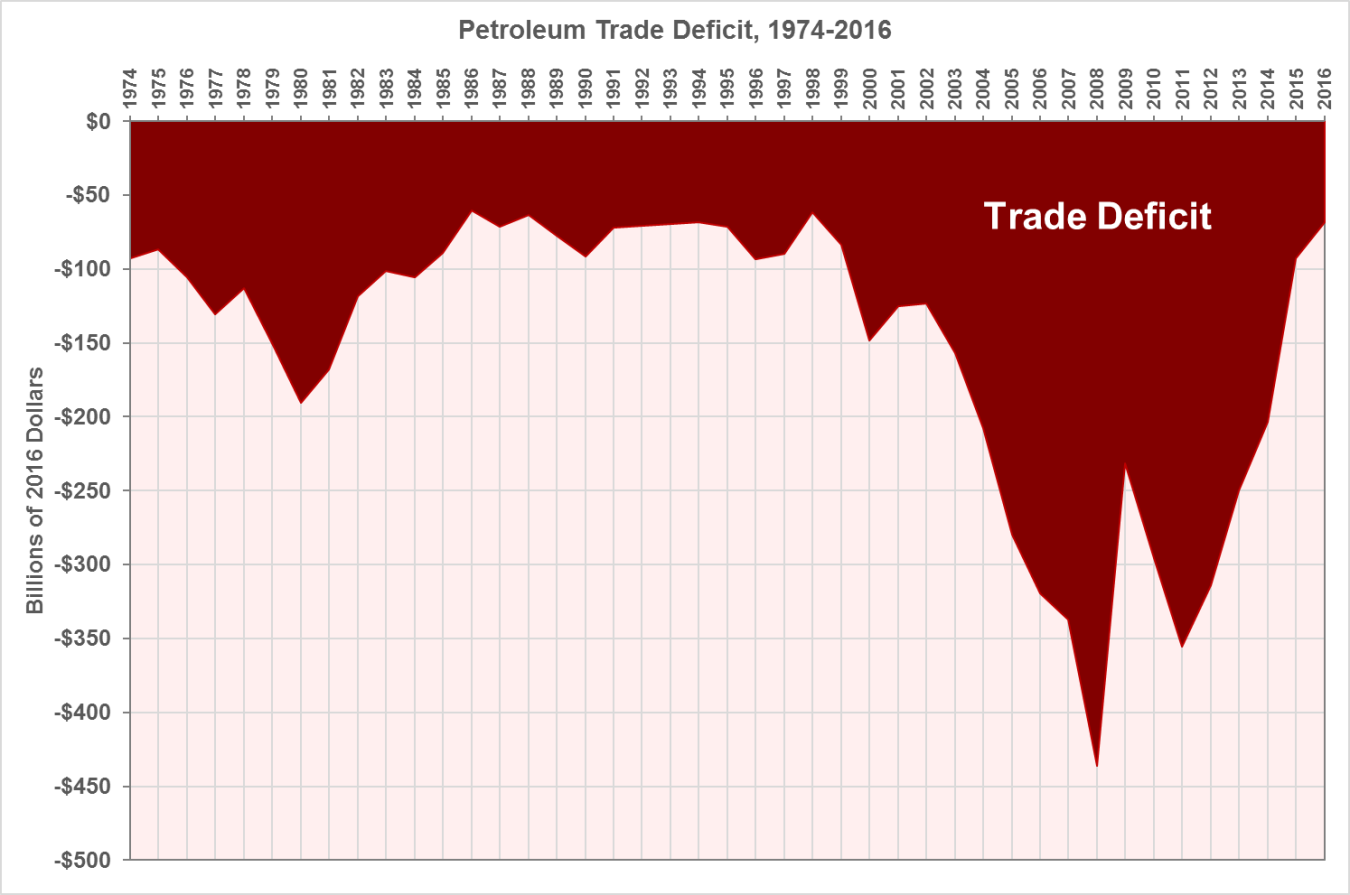The U.S. petroleum trade balance has increased since 2011 and is at the highest value since 1998; the trade deficit of petroleum is at its lowest.
November 6, 2017SUBSCRIBE to the Fact of the Week
The value of petroleum exports minus the value of petroleum imports, called the U.S. petroleum trade balance, has increased since 2011 and is at the highest value since 1998 (adjusted for inflation), thus, the trade deficit of petroleum is at its lowest. The decrease in the deficit is partly because of the decrease in the price of oil combined with the increase in domestic natural gas and oil production from hydraulic fracturing and new extraction technology. In 2016, the petroleum trade balance was −$68.3 billion; this deficit is one-sixth as much as in 2008, the lowest point in the series (−$436.1 billion).
Petroleum Trade Deficit, 1974-2016

Notes:
- Petroleum trade balance is calculated as the value of petroleum exports minus the value of petroleum imports.
- Through 2010, data are for crude oil, petroleum preparations, liquefied propane and butane, and other mineral fuels. Beginning in 2011, data are for petroleum products and preparations.
Source: Energy Information Administration, Monthly Energy Review September 2017, Table 1.5.

